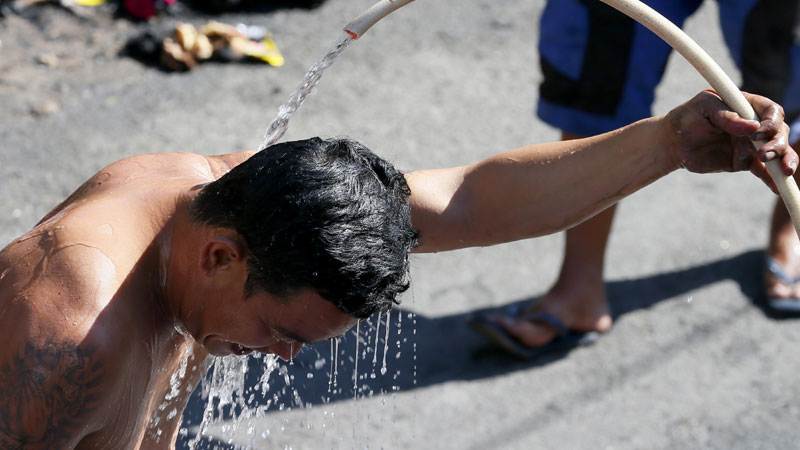Heat index in PH continues to peak at dangerous levels, warns Pagasa

Stay indoors and hydrate, according to Pagasa, as heat index reached “danger” level in several areas of the country on Thursday, May 2, 2024. File photo / AP Photo/Bullit Marquez
MANILA, Philippines —The heat index in the country peaked at a scorching 42 to 48 degrees Celsius on Thursday, the Philippine Atmospheric, Geophysical, and Astronomical Services Administration (Pagasa) said.
Based on the state weather bureau’s computed heat index as of 5 p.m. on May 2, heat indices under the “danger” category were recorded in the following areas:
ADVERTISEMENT
48 degree Celsius
- Dagupan City, Pangasinan
- Appari, Cagayan
46 degree Celsius
- Roxas City, Capiz
45 degree Celsius
- Laoag City, Ilocos Norte
- Cuyo, Palawan
44 degree Celsius
- Iba, Zambales
- Dumangas, Iloilo
- Zamboanga City, Zamboanga del Sur
43 degree Celsius
- Tuguegarao City, Cagayan
- San Jose, Occidental Mindoro
- Puerto Princesa City, Palawan
- Virac (Synop), Catanduanes
42 degree Celsius
- MMSU in Batac, Ilocos Norte
- Casiguran, Aurora
- Cubi Point in Subic Bay, Olongapo City
- Infanta, Quezon
- Coron, Palawan
- Aborlan, Palawan
- Masbate City, Masbate
- Catbalogan, Samar
- Borongan, Eastern Samar
- Davao City, Davao del Sur
- Cotabato City, Maguindanao
READ: ‘Dangerous’ heat index expected in 39 areas on May 2 — Pagasa
Pagasa defines heat index as “a measure of the contribution that high humidity makes with abnormally high temperatures in reducing the body’s ability to cool itself.”
Heat indices ranging from 42 to 51 degrees Celsius fall under the “danger” category.
People exposed to these heat indices are prone to heat cramps, exhaustion, and even heat stroke with drawn-out exposure.
To prevent the effects of roasting weather, Pagasa said the public must limit time spent outdoors; drink plenty of water; avoid tea, coffee, soda, and liquor; use umbrellas, wear hats, and wear sleeved clothing outdoors; and schedule heavy-duty activities on the cooler periods of the day.
Pagasa noted that symptoms of heat-related illnesses include heavy sweating, exhaustion or fatigue, dizziness or lightheadedness, blacking out or feeling dizzy when standing, a weak but fast pulse, nausea, and vomiting.
In cases of emergency, Pagasa advised the public to do the following:
- Move the person to a shady spot and lie him or her down with legs elevated
- If conscious, have them sip cool water
- Remove clothing, apply cool water to the skin and provide ventilation
- Apply ice packs to the armpits, wrists, ankles, and groin
- Bring to a hospital immediately
Your subscription could not be saved. Please try again.
Your subscription has been successful.
EDITORS’ PICK
MOST READ
View comments
